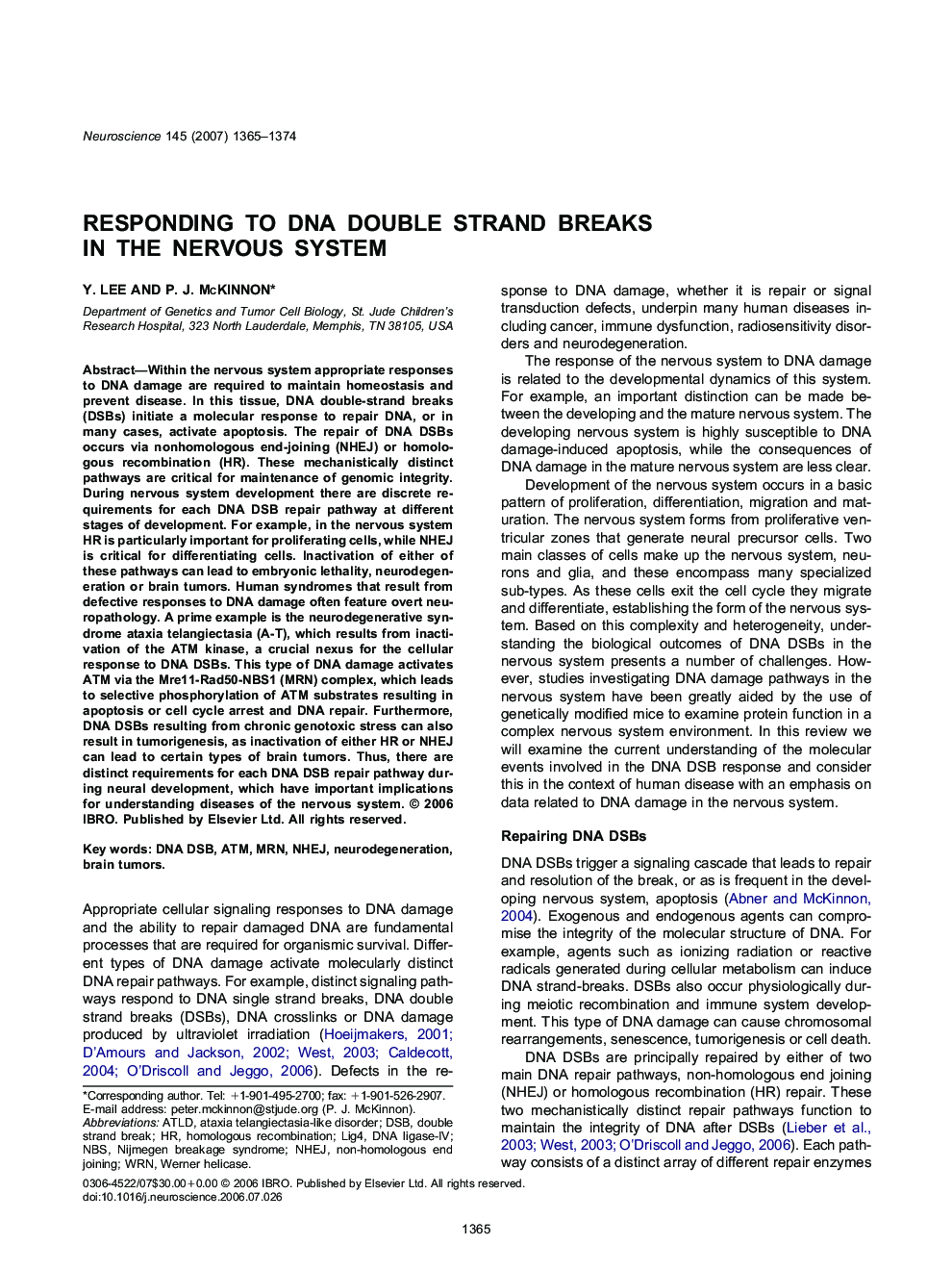| Article ID | Journal | Published Year | Pages | File Type |
|---|---|---|---|---|
| 6278484 | Neuroscience | 2007 | 10 Pages |
Abstract
Within the nervous system appropriate responses to DNA damage are required to maintain homeostasis and prevent disease. In this tissue, DNA double-strand breaks (DSBs) initiate a molecular response to repair DNA, or in many cases, activate apoptosis. The repair of DNA DSBs occurs via nonhomologous end-joining (NHEJ) or homologous recombination (HR). These mechanistically distinct pathways are critical for maintenance of genomic integrity. During nervous system development there are discrete requirements for each DNA DSB repair pathway at different stages of development. For example, in the nervous system HR is particularly important for proliferating cells, while NHEJ is critical for differentiating cells. Inactivation of either of these pathways can lead to embryonic lethality, neurodegeneration or brain tumors. Human syndromes that result from defective responses to DNA damage often feature overt neuropathology. A prime example is the neurodegenerative syndrome ataxia telangiectasia (A-T), which results from inactivation of the ATM kinase, a crucial nexus for the cellular response to DNA DSBs. This type of DNA damage activates ATM via the Mre11-Rad50-NBS1 (MRN) complex, which leads to selective phosphorylation of ATM substrates resulting in apoptosis or cell cycle arrest and DNA repair. Furthermore, DNA DSBs resulting from chronic genotoxic stress can also result in tumorigenesis, as inactivation of either HR or NHEJ can lead to certain types of brain tumors. Thus, there are distinct requirements for each DNA DSB repair pathway during neural development, which have important implications for understanding diseases of the nervous system.
Keywords
Related Topics
Life Sciences
Neuroscience
Neuroscience (General)
Authors
Y. Lee, P.J. McKinnon,
